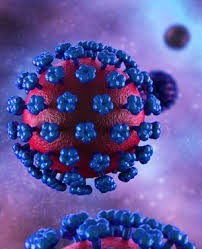Many confuse Lassa virus with Ebola virus though they share many similarities especially in the symptoms and hemorrhage (bleeding). Lassa fever is an acute viral illness is found in West Africa. The cause of the illness is cause by Lassa virus, named after the town in Nigeria in Borno State where the first case was seen.
Lassa fever is a zoonotic disease, meaning that humans become infected from contact with infected animals. The animal reservoir, or host, of Lassa virus is a rodent of the genus Mastomys, commonly known as the “multimammate rat” Mastomys rats infected with Lassa virus do not become ill, but they pass virus in their urine and faeces.
Because the clinical course of the disease is so variable, detection of the disease in affected patients has been difficult. However, when presence of the disease is confirmed in a community, prompt isolation of affected patients, good infection protection and control practices and rigorous contact tracing can stop outbreaks.
Symptoms
The incubation period (before symptoms appear) of Lassa fever ranges from 6-21 days. The onset of the disease, when it is symptomatic, is usually gradual, starting with fever, general weakness. After a few days, headache, sore throat, muscle pain, chest pain, nausea (feeling of vomit), vomiting, diarrhoea, cough, and abdominal pain may follow. In severe cases facial swelling, fluid in the lung cavity, bleeding from the mouth, nose, vagina or gastrointestinal tract and low blood pressure may develop. Protein may be noted in the urine. Shock, seizures, tremor, disorientation, and coma may be seen in the later stages. Deafness occurs in 25% of patients who survive the disease. In half of these cases, hearing returns partially after 1-3 months. Transient hair loss may occur during recovery.
Death usually occurs within 14 days of onset in fatal cases. The disease is especially severe late in pregnancy, with maternal death and/or fetal loss (abortion) occurring in greater than 80% of cases during the third trimester.
Transmission
Humans usually become infected with Lassa virus from exposure to urine or faeces of infected Mastomys rats. Lassa virus may also be spread between humans through direct contact with the blood, urine, faeces, or other bodily secretions of a person infected with Lassa fever. Contact with mastomys rats and also cooking and eating them can lead to the fever, where some communities use them as delicacy ie bush meat. Person-to-person transmission occurs in both community and health-care settings, where the virus may be spread by contaminated medical equipment, such as re-used needles. Sexual transmission of Lassa virus has been reported.
Persons at greatest risk are those living in rural areas where Mastomys rats are usually found, especially in communities with poor sanitation or crowded living conditions. Health workers are at risk if caring for Lassa fever patients in the absence of proper barrier nursing and infection control practices.
Treatment
An antiviral drug seems to be an effective treatment for Lassa fever only if given early on in the course of clinical illness. There is currently no vaccine that protects against Lassa fever.
Prevention and control
- Prevention of Lassa fever relies on promoting good “community hygiene” to discourage rodents from entering homes. Effective measures include storing grain and other foodstuffs in rodent-proof containers, disposing of garbage far from the home, maintaining clean households and keeping cats. Because Mastomys rats are so abundant in endemic areas, it is not possible to completely eliminate them from the environment. Family members should always be careful to avoid contact with blood and body fluids while caring for sick persons. Also eating these rodents is discouraged.
- In health-care settings, staff should always apply standard infection prevention and control precautions when caring for patients, regardless of their presumed diagnosis. These include basic hand hygiene, respiratory hygiene, use of personal protective equipment (to block splashes or other contact with infected materials), safe injection practices and safe burial practices.
- Health workers caring for patients with suspected or confirmed Lassa fever should apply extra infection control measures to prevent contact with the patient’s blood and body fluids and contaminated surfaces or materials such as clothing and bedding. When in close contact (within 1 metre) of patients with Lassa fever, health-care workers should wear face protection (a face shield or a medical mask and goggles), a clean, non-sterile long-sleeved gown, and gloves (sterile gloves for some procedures).
- Laboratory workers are also at risk. Samples taken from humans and animals for investigation of Lassa virus infection should be handled by trained staff and processed in suitably equipped laboratories.
Asmau Ahmad is a young female microbiologist and leaves in Kano, Nigeria. She can be reached via asmeee@yahoo.com





